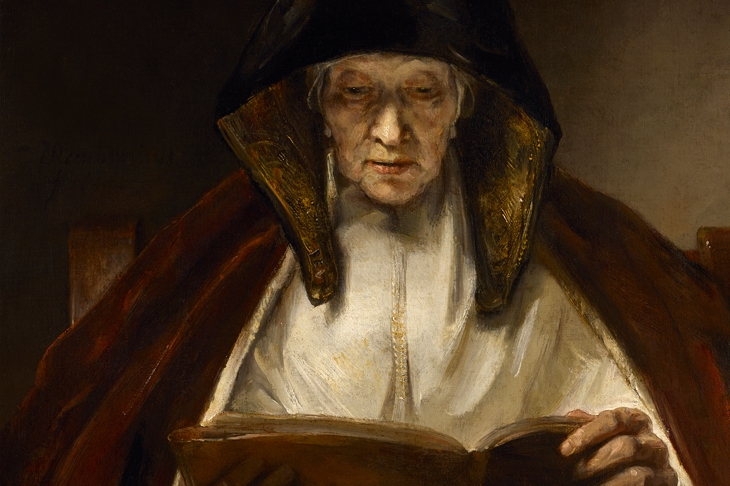The Rembrandt show at the National Galleries of Scotland (until 14 October) has a problem. A mighty haul of Rembrandt paintings and prints are arrayed against a backdrop that mines the historical impact of his work on British artists and collectors. This is interesting. The problem is that the Rembrandt works are so astounding that there’s a danger you won’t bother with the rest. You should, because here Reynolds and Raeburn and Ramsay and more, all inescapably influenced by Rembrandt, tell fascinating and sometimes complicated tales of artistic heredity and homage.
There’s no disgrace in going only for the Rembrandts, though. Hell, go there just to see the one wall that displays ‘An Old Woman Reading’ (1655), ‘A Man in Oriental Costume (King Uzziah)’ (c.1639) and ‘Portrait of an Elderly Man’ (1667) if you want, and immerse yourself in three of the best faces ever painted, and six of the best hands. Marvel at the subtlety of the lighting on that bony old woman, about to lift her eyes to meet your own. Note the remarkably rough brushwork of the florid elderly man, and how highlights are scratched out of the underpainting in the shadows. Focus only on the hands of Uzziah if you prefer; you could stare for a day and still not fathom the technical brilliance that rendered these paws the very definition of heavy, aged flesh. But then that would be to miss out on ‘The Mill’ (1645-8), that hugely influential landscape with its balanced curves of land and water, and the windmill, lit by a low, pink sun, which punches the exquisite sky. This was, according to Constable, ‘the first picture in which a sentiment has been expressed by chiaroscuro only’.
It would be a tragedy also to neglect the composure of the Bridgewater self-portrait (c.1657)








Comments
Join the debate for just £1 a month
Be part of the conversation with other Spectator readers by getting your first three months for £3.
UNLOCK ACCESS Just £1 a monthAlready a subscriber? Log in